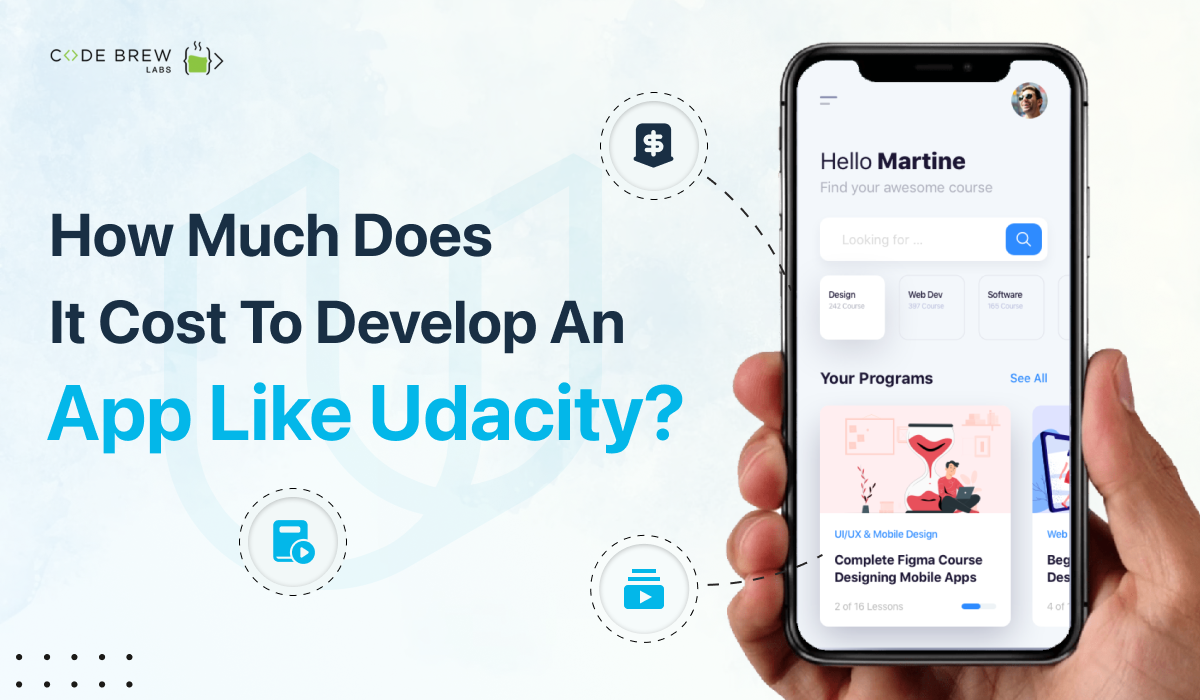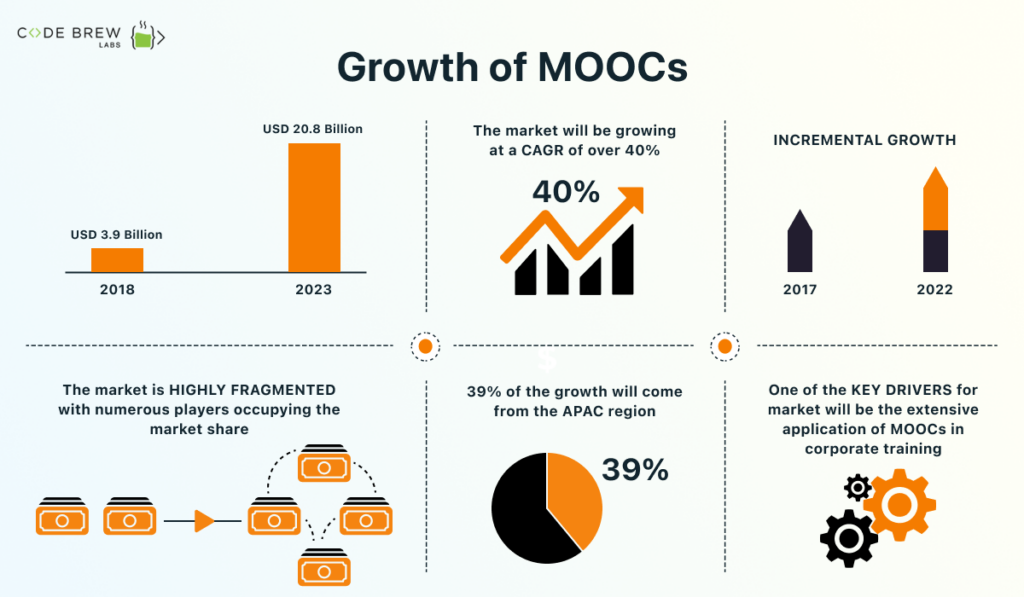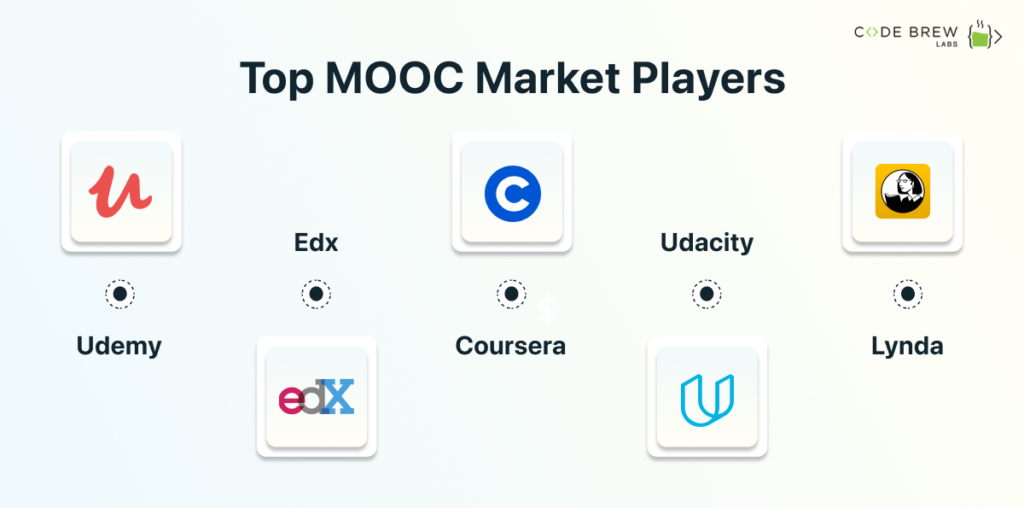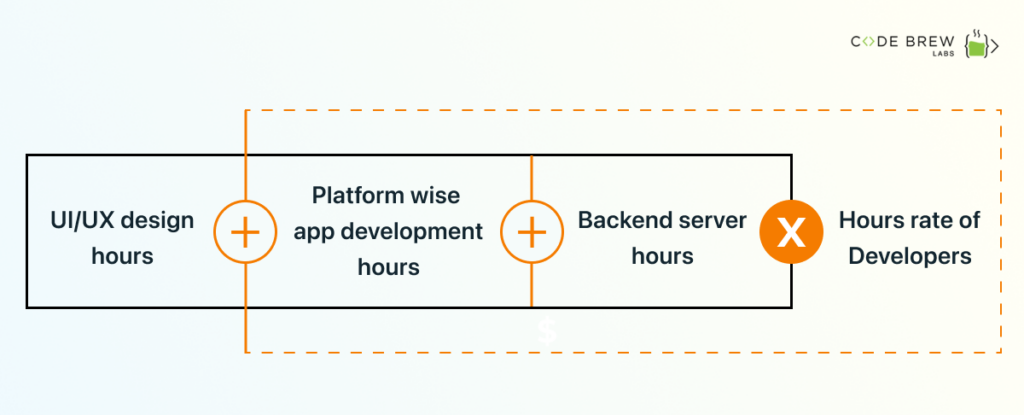
A GlobalData report says that the EdTech market is expected to grow at a CAGR of 16.0% during 2022-2026. So, the EdTech industry is growing at a phenomenal rate. And not without reason.
Table of Content
With rapid technological advancements, recruiters today are looking for those candidates who have an aptitude to ‘unlearn, relearn and adapt’ and that too, quickly.
The coming up of the skill-based economy over the last decade has shifted the onus towards job aspirants and existing employees acquiring certifications through online courses. These certifications vary from learning a new design tool to understanding the basics of digital marketing, and much more.
This growing demand for online learning has not gone unnoticed by both investors and entrepreneurs, who are now taking a new interest in e-learning app development.
If you’re one in line to develop an app like Udacity, there are many factors that determine the total cost you’ll incur. First is the number and type of features.

There are some essential features that are crucial to the working of an education app like Udacity while making it more user-friendly and intuitive. These are:
All the e-learning platforms–no matter whether a website or an app–showcase a catalog of courses that require a search and filtering mechanism.
Users should be able to find the course they are looking for by typing the keyword in the search bar and/or by going through the primary and secondary categories.
An integrated tool in the app should allow the teachers to develop a course, and prepare questionnaires, quizzes, etc. Besides, they should be able to do other multiple things–design a course structure, write scripts, and add slides, videos, text, audio files, PDFs, etc.
When you create an online education app, you need to accommodate three panels in the platform–Learner, Teacher, and Admin. Here are the features each panel should have when you develop an app like Udacity:
Also Read: An Ultimate Guide to Build Successful E-learning App like Udemy
The instructors need access to a dashboard for carrying out several tasks and gaining useful insights.
For the teacher, a dashboard typically has information on:
For the learner, the dashboard should have details like:
When you go for education app development, multiple payment modes can be added–debit/credit cards, net banking, UPI, PayPal, Venmo, etc.
Notifications are an absolute must-have feature as these significantly improve conversions. Integrate the notification mechanism in the app like Udacity in a way that the users always know about new courses on the topics they are interested in.
The admin can even send the users alerts about referral offers and discounts.
This feature helps students stay right on track and accomplish their goals. For every course they are registered in, users should get personalized dashboards with a progress bar. They should be able to quickly glance at the study material and know the following week’s tasks. This feature saves time and thus greatly adds to the user experience.
After the various features we discussed, the next big factor affecting the cost is the tech stack that is used to create an online education app like Udacity.

If you are planning to go with the exact features and tech stack we stated above, the cost to develop an app like Udacity will fall between $76,500 to $1,03,000.
Note that this is an approximate base amount and the cost will increase as you add more high-end capabilities to the app like Artificial Intelligence, Machine Learning, animations, or even blockchain.
Also, the more complex the app, the greater the cost of e-learning app development. To develop an app like Udacity with basic features, you’ll need to shell out between $40,000 to $60,000. For a more high-end platform, the price lies between $60,000 to $150,000. And for a premium version, you’ll have to pay about $300,000.
There are some overhead costs that you incur after you develop an app like Udacity and the app is LIVE on App Store and Play Store. These costs can be incurred one time or can be continuous, depending on the requirement and app lifetime.
These include costs for infrastructure, hosting, storage, and bandwidth. Further, recurring non-IT costs include promotions, legal, marketing, and advertising costs.
This fixed cost includes integrations with various providers where you want to showcase your content–websites and mobile apps and even TV apps to serve content to subscribers.
The cost also includes creating payment systems and one-time setup fees for your hosting platform provider.
You may like this video: https://www.youtube.com/watch?v=xJnmR7MPvdY&t=1s
You can also use the given formula to get a rough estimate of the e-learning app development cost.
The amount of time (in hours) taken to develop an app like Udacity is multiplied by the billable hours of the resources spent in the whole development process.

If you’re looking to create an online education app like Udacity, talk to us at Code Brew Labs. Our adept e-learning app builders have built thousands of top-notch mobile apps for leading brands worldwide, who are still our loyal customers.
Do reach out to us. We’ll be happy to assist you.
